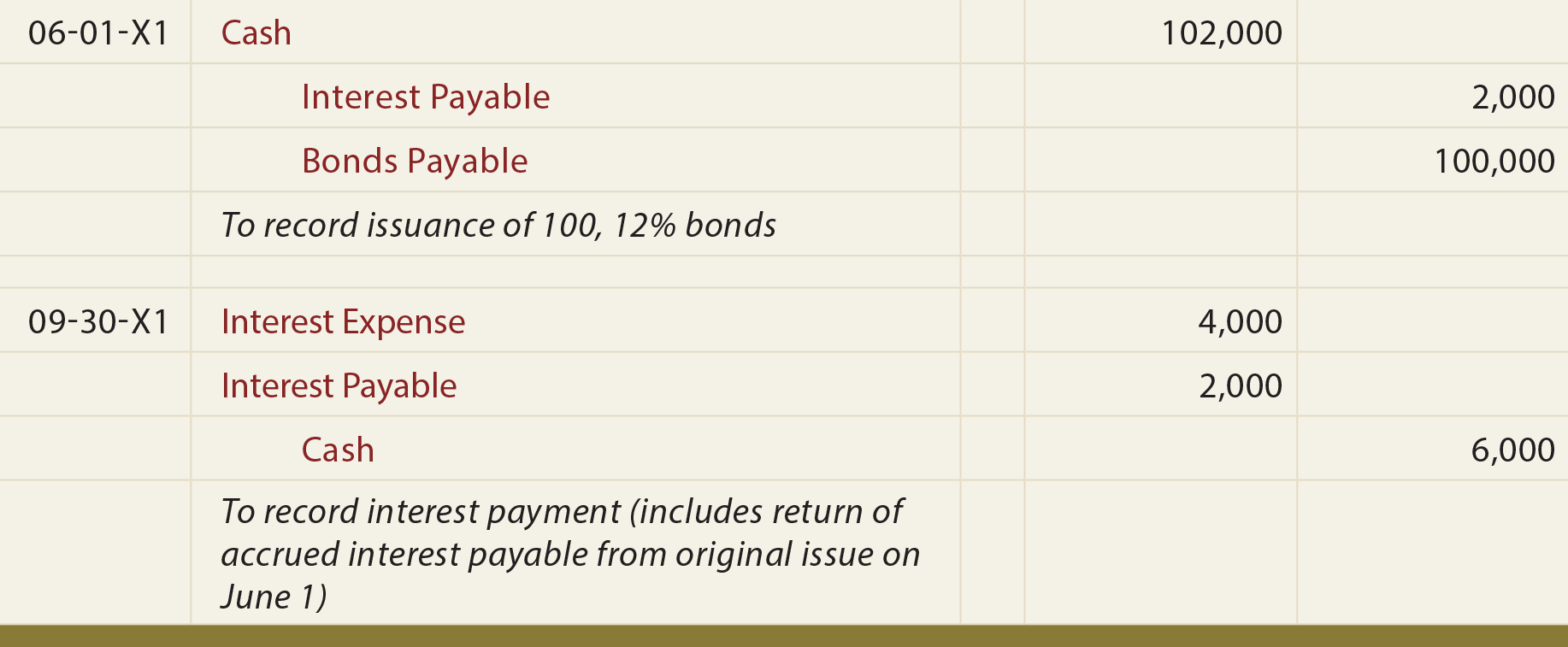
The amount of interest payable is determined by the terms of the loan or other lending agreement. Accurate and timely accrued interest accounting is important for lenders and for investors who are trying to predict the future liquidity, solvency, and profitability of a company. Below is a break down of subject weightings in the FMVA® financial analyst program. As you can see there is a heavy focus on financial modeling, finance, Excel, business valuation, budgeting/forecasting, PowerPoint presentations, accounting and business strategy. The note payable is $56,349, which is equal to the present value of the $75,000 due on December 31, 2019. The present value can be calculated using MS Excel or a financial calculator.
Journal Entries for Interest Expense
By recording the entries in the general ledger, the company can ensure that all financial information is accurate and up-to-date. The interest payable account is classified as liability account and the balance shown by it up to the balance sheet date deducting sales tax is usually stated as a line item under current liabilities section. And since usually we don’t pay for interest expenses right away, the other account part of the journal entry is interest payable, which is a liability account representing the debt.
Can journal entries be corrected once recorded, and how?
But the following are some of the main factors that set these two types of costs apart. Up until that time, the future liability may be noted in the disclosures that accompany the financial statements. As a borrower, you would debit your interest expense account and credit your accrued interest payable account.
AccountsBalance
The balance sheet or journal entry for interest payable enables firms to check and track their financial obligations and be prepared to bear them as and when scheduled. The interest expenses yet to be paid off by the time the balance sheet is prepared are recorded by the firm. Anything beyond that is discarded and left to be recorded in the next fiscal year. The journal entry for recording interest payments should be entered into the company’s accounting system as soon as the amount due has been calculated.
Debits and Credits
For this calculation, the normal mathematical equation to calculate the interests is used. However, there is a series of steps that must be followed to ensure the calculation is done accurately. Interest payable is the amount of interest that company owes to the bank or creditors. When calculating interest payable, businesses must take into consideration the current market rates, the length of the loan, and the principal amount of the loan. Additionally, businesses should also consider any fees or charges that have been added to the loan. Accrued interest normally is recorded as of the last day of an accounting period.

- On the 5th of next month, company has to pay the interest to bank, they have to reverse the interest payable and credit cash.
- Companies must pay interest on all outstanding debt, and this must be reflected accurately on the balance sheet.
- Reversing a journal entry is most common for entries for for recurring expenses or revenues.
- Furthermore, keeping accurate records of interest payable can help the company to better manage its cash flow and to make sure that all payments are made on time.
- This means that at the end of the fiscal year the company has to pay $250 to cover their interest expense.
- Interest payable, as the name suggests, accounts for the accumulated interest amount that a firm is yet to pay.
If the loan were taken on 1st January, then the interest expense for the year would have been for 12 months. One can calculate the interest payable by multiplying the amount to be borrowed or already borrowed with the period rate of interest. On the 5th of next month, company has to pay the interest to bank, they have to reverse the interest payable and credit cash. ABC has to record the interest expense $ 500 per month based on the money borrowed and the interest rate. Interest payable is an accounting term that refers to the amount of interest an entity owes to another party.
After the third month, the company again records this entry, bringing the total balance in the interest payable account to $15,000. It then pays the interest, which brings the balance in the interest payable account to zero. Interest Expense will be closed automatically at the end of each accounting year and will start the next accounting year with a $0 balance. How you create an accrued interest journal entry depends on whether you’re the borrower or lender. The interest expense of $12,500 incurred during 2020 must be charged to the income statement for the year 2020.
When the goods or services are provided, this account balance is decreased and a revenue account is increased. Interest Payable is the amount of interest expenses that have been incurred at a point but are yet to be paid. It is one of the forms of liability account that contains information about the interest payments accumulated over time and is scheduled to be paid in future. At the end of the month, the journal entry is debiting interest expense $ 500 and credit interest payable $ 500.
At the end of a quarter, the company would pass the same entry, and the balance in the interest payable account would be $60,000 (until the interest expenses are paid). At the end of the first month, as the company accrues $20,000 in interest, the company would debit $20,000 as interest expense and credit the same amount as the interest payable balance sheet. Let’s say that Rocky Gloves Co. borrowed $500,000 from a bank for business expansion on 1st August 2017. The interest rate was 10% per annum, and they needed to pay the interest expense 20 days after each month ended. Find out the company’s interest expense and the interest payable as of 31st December 2017. On account of capital rents, an organization may need to deduce the measure of payable interest expense, in view of a deconstruction of the fundamental capital rent.
The 860,653 value means that this is a premium bond and the premium will be amortized over its life. Whether you are the lender or the borrower, you must record accrued interest in your books. The payable is a temporary account that will be used because payments are due on January 1 of each year. And finally, there is a decrease in the bond payable account that represents the amortization of the premium. The following example will explain interest payable more properly; a business owes $3,000,000 to a bank at a 5% financing cost and pays interest to the provider each quarter. Debiting an accrued expense and crediting a liability account accurately reflects the financial obligation a company has incurred for interest payments.
It is essentially calculated as the interest rate times the outstanding principal amount of the debt. Interest expense on the income statement represents interest accrued during the period covered by the financial statements, and not the amount of interest paid over that period. While interest expense is tax-deductible for companies, in an individual’s case, it depends on their jurisdiction and also on the loan’s purpose. A liability is created when a company signs a note for the purpose of borrowing money or extending its payment period credit.
